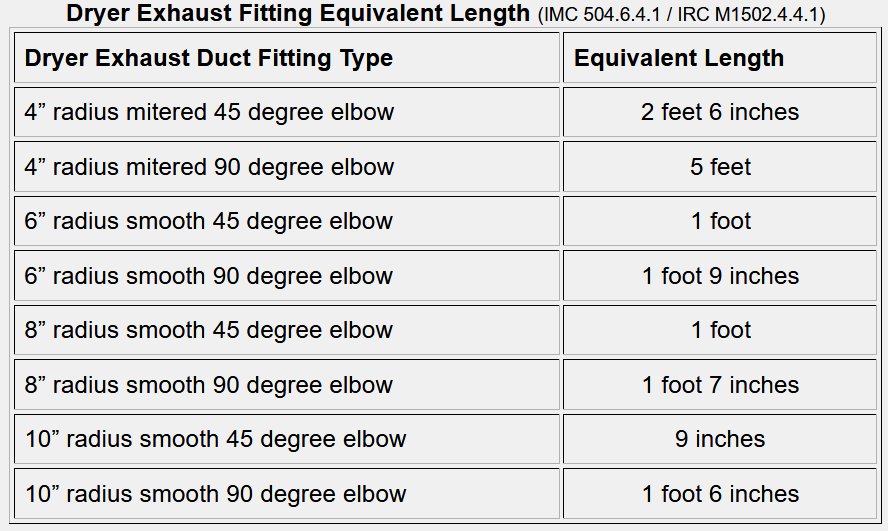 In an effort to reduce the number of dryer fires (over 15,500 per year in the US alone) most building code has strict guidelines for properly venting a dryer. Every foot of duct run reduces airflow efficiency and small radius elbows have an even greater impact.
In an effort to reduce the number of dryer fires (over 15,500 per year in the US alone) most building code has strict guidelines for properly venting a dryer. Every foot of duct run reduces airflow efficiency and small radius elbows have an even greater impact.
 The Dryer-Ell was specifically designed to eliminate that impact. Calling on ASHRAE engineering fundamentals, it's built with a smooth interior and sweeping radius that improve airflow efficiency. UL found it to be 500% more efficient than sectioned elbows.
The Dryer-Ell was specifically designed to eliminate that impact. Calling on ASHRAE engineering fundamentals, it's built with a smooth interior and sweeping radius that improve airflow efficiency. UL found it to be 500% more efficient than sectioned elbows.
Today, ten inch radius elbows are written into both International Residential Code and International Mechanical Code. You may click on the links below for a printable version of the section affecting dryer ducting. More detail on how it got added follows.
Dryer-Ell Code Approval History and Supporting Documents
Different municipalities adopt code revisions at different rates, so it's important to have a history of Dryer-Ell adoption. This will help you to be certain you have the right supporting detail for the local inspector.
For 2009, ICC published tables that clearly delineate the fact the Dryer-Ell is measured the same as straight pipe in both International Residential and International Mechanical Codes.
For quick reference, here is the pertinent table showing the equivalent length of various elbows. You will note that the equivalent length for ten inch radius, smooth elbows matches the lengths of each model Dryer-Ell.
Dryer Exhaust Fitting Equivalent Length (IMC 504.6.4.1 / IRC M1502.4.4.1)
| Dryer Exhaust Duct Fitting Type | Equivalent Length |
| 4" radius mitered 45 degree elbow | 2 feet 6 inches |
| 4" radius mitered 90 degree elbow | 5 feet |
| 6" radius smooth 45 degree elbow | 1 foot |
| 6" radius smooth 90 degree elbow | 1 foot 9 inches |
| 8" radius smooth 45 degree elbow | 1 foot |
| 8" radius smooth 90 degree elbow | 1 foot 7 inches |
| 10" radius smooth 45 degree elbow | 9 inches |
| 10" radius smooth 90 degree elbow | 1 foot 6 inches |
Here are links to the current 2018 International Code Council Building Codes that deal with Dryer Venting
2018 International Residential Code for One and Two Family Dwellings Section M1502 Clothes Dryer Exhaust
2018 International Mechanical Code Section 504 Clothes Dryer Exhaust


